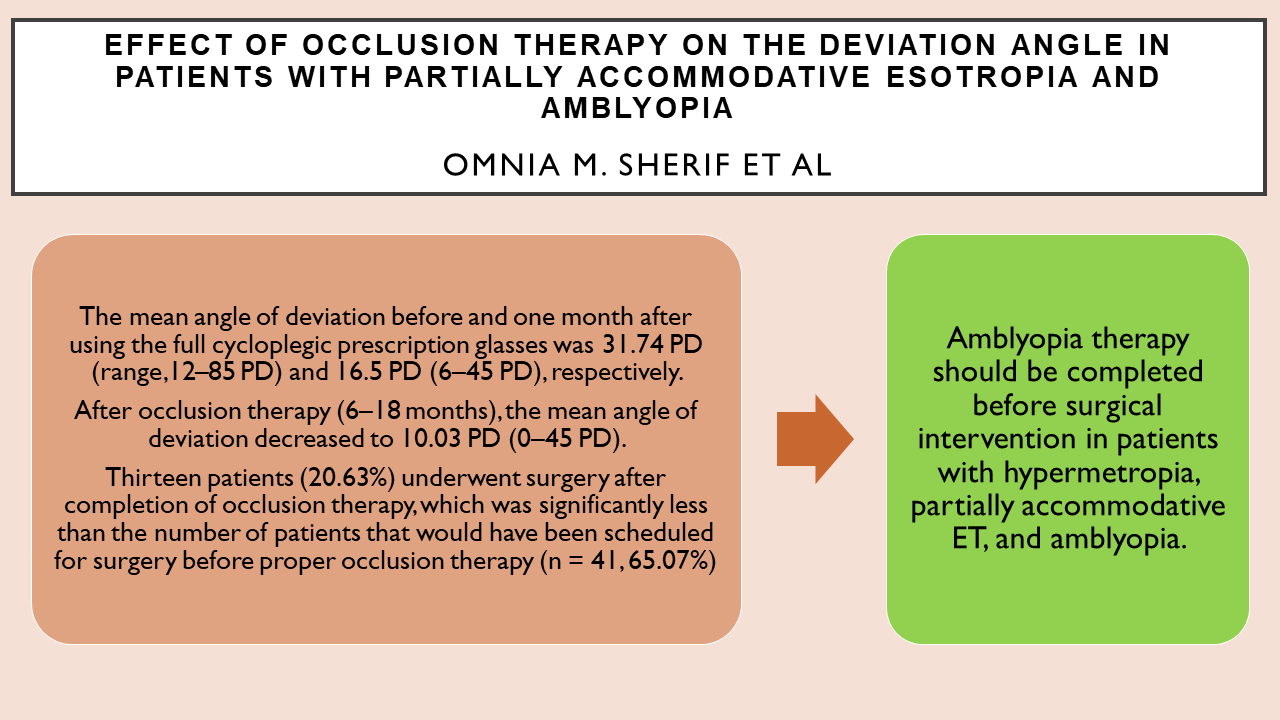Effect of Occlusion Therapy on the Deviation Angle in Patients with Partially Accommodative Esotropia and Amblyopia
Doi:10.36351/pjo.v40i3.1822
DOI:
https://doi.org/10.36351/pjo.v40i3.1822Abstract
Purpose: To assess the impact of occlusion therapy on the deviation angle in patients with partially accommodative esotropia (ET) and amblyopia.
Study Design: Retrospective chart review.
Place and Duration of Study: The medical records of patients attending the pediatric ophthalmology clinic at Elite Hospital, Riyadh, Saudi Arabia between June, 2014 and September, 2021 were reviewed.
Methods: We retrospectively analyzed the pre- and post-therapy, angle of deviation of 63 children with partially accommodative ET who underwent occlusion therapy for amblyopia.
Results: The mean angle of deviation before and one month after using the full cycloplegic prescription glasses was 31.74 PD (range,12–85 PD) and 16.5 PD(6–45 PD), respectively. After occlusion therapy (6–18 months), the mean angle of deviation decreased to 10.03 PD (0–45 PD). Thirteen patients (20.63%) underwent surgery after completion of occlusion therapy, which was significantly less than the number of patients that would have been scheduled for surgery before proper occlusion therapy (n = 41, 65.07%).
Conclusion: Amblyopia therapy should be completed before surgical intervention in patients with hypermetropia, partially accommodative ET, and amblyopia. There was a significant reduction in ET angle following occlusion therapy. Furthermore, it decreased the number of patients requiring surgery and the angle to be corrected.

Downloads
Published
How to Cite
Issue
Section
License
Copyright (c) 2024 Omnia M. Sherif, Saleh A. AlKhaldi, Mohammed A. Radwan

This work is licensed under a Creative Commons Attribution-NonCommercial 4.0 International License.






